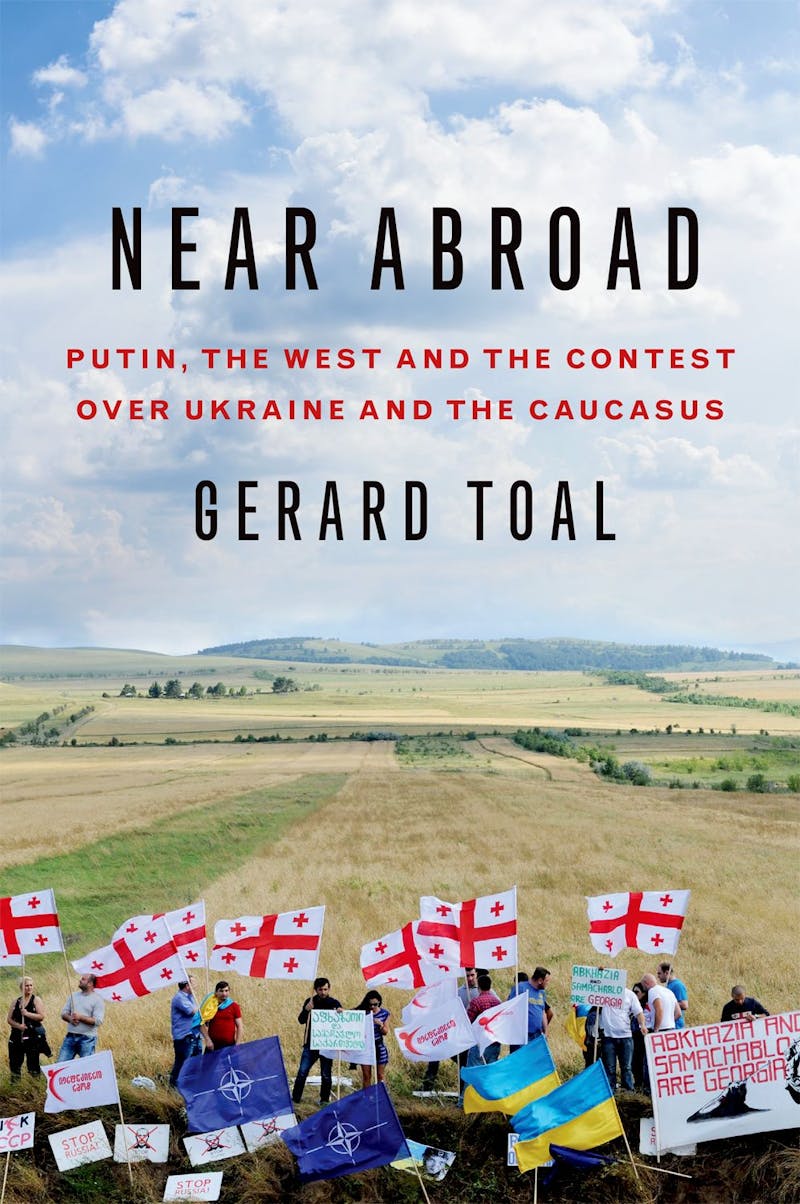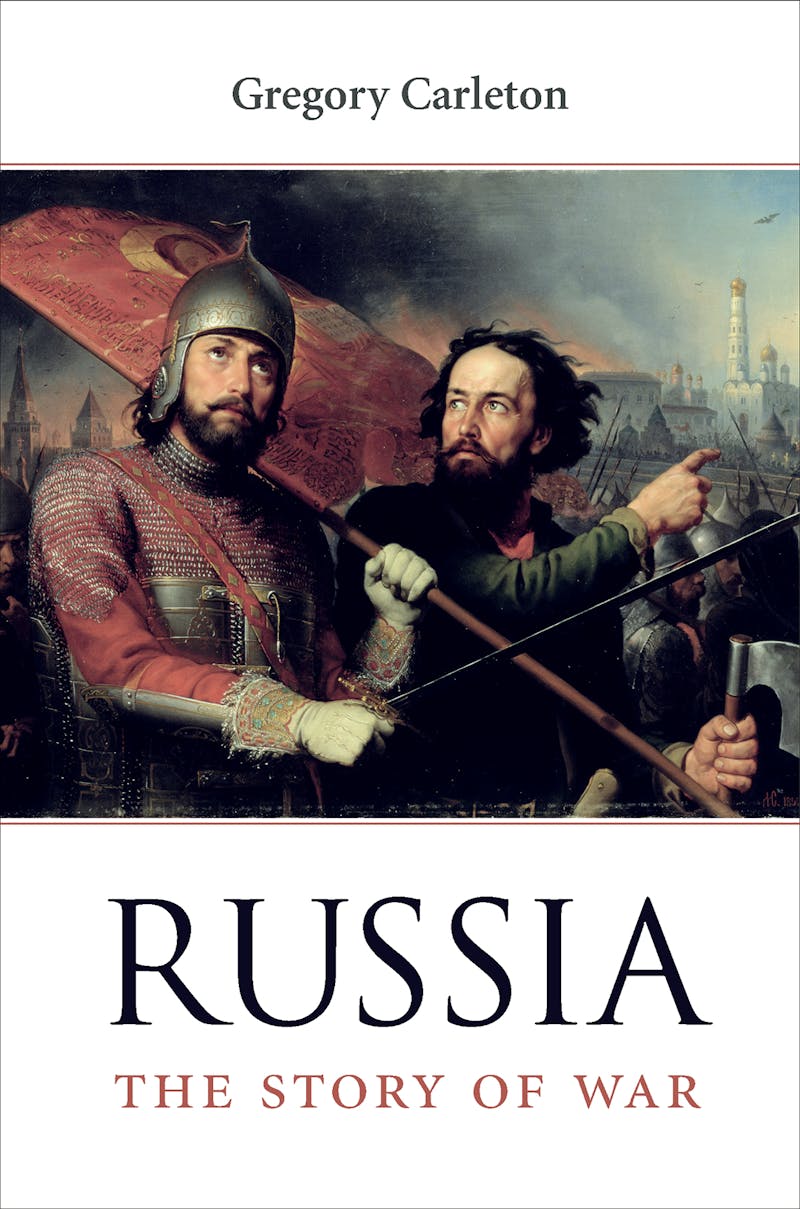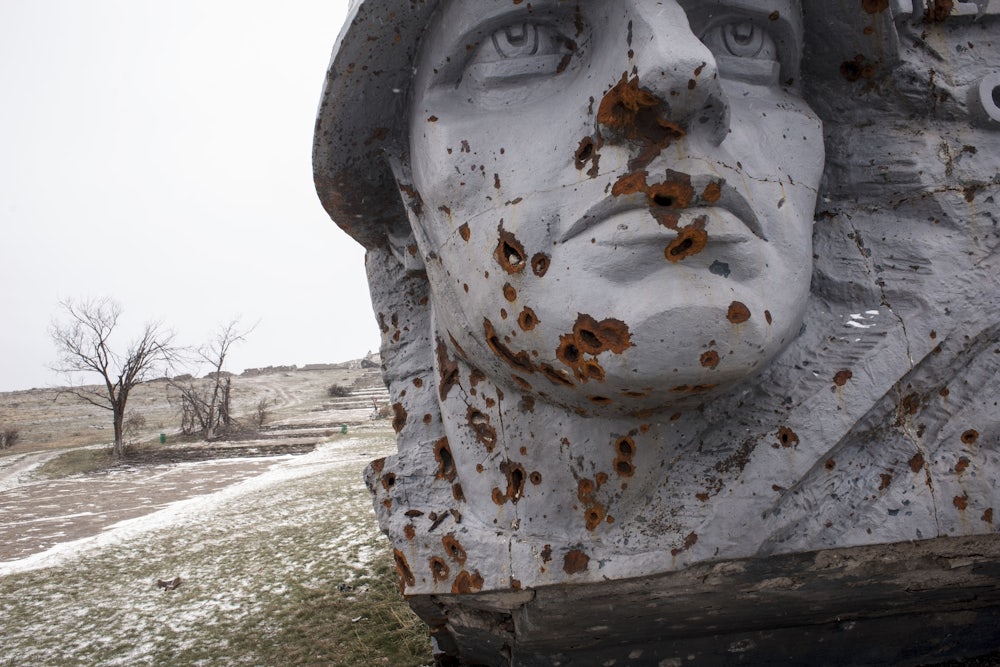The past year has seen the greatest panic over Russia’s influence on U.S. politics since the end of the Cold War. From the hacking of DNC servers during the presidential campaign to links between Russian officials and Trump’s team, Democrats have leapt at the idea that Trump’s victory resulted from Russian machinations, even though there remains little evidence that the hacks decisively affected the election. Rather than revising their platform to appeal to today’s working class, Democrats have pointed their fingers at a familiar enemy; rather than listening to their base, they have put their faith in the intelligence community.
Russia-blaming is an easy sell, in part, because the American narrative about Russia (or rather, about the Soviet Union) is so well-rehearsed. The rhetoric of the Cold War is still fresh in the memory of an aging political class, and a new generation of pundits has proved eager to revive it. Post-Soviet, oligarchic-capitalist Russia is frequently referred to as “Soviet” or “communist.” Last fall, during the campaign, MSNBC host Joy-Ann Reid tweeted, “For most Americans it’s shocking to see an American presidential candidate openly touting authoritarian, communist Russia.” Others even claim to have identified an essential Russianness. In May, former Director of National Intelligence James Clapper told NBC that Russians “are typically, almost genetically driven to co-opt, penetrate, gain favor, whatever.”
The idea that Russians are fundamentally different from Westerners dates back several centuries in European history, and reached its apotheosis in the Nazi classification of Slavs as Untermenschen. In his memoirs, German general F.W. Mellenthin wrote:
A feature of the Russian soldier is his utter contempt for life or death, so incomprehensible to a Westerner. The Russian is completely unmoved when he steps over the dead bodies of hundreds of his comrades, with the same unconcern he buries his dead compatriots, and with no less indifference he faces his own death. For him life holds no special value; it is something easy to throw away.
This, of course, is far from how Russians see themselves. Two new books—Gregory Carleton’s Russia: The Story of War and Gerard Toal’s Near Abroad: Putin, the West and the Contest Over Ukraine and the Caucasus—examine Russia’s self-image in detail, providing the kind of context and nuance that is badly needed in the current climate of hysteria and conspiracy theories. Looking back eight centuries, Carleton traces an epic tale of war and redemption, of a Russia that finds itself constantly at risk of barbarian invasion and annihilation and yet manages, time and again, to save both itself and its neighbors. Toal, meanwhile, shows how Russia’s national narrative resembles America’s own: In their aggressions, both countries see themselves as the uniquely appointed savior of Western civilization.
Over the past 20 years, Russia’s and America’s narratives have clashed repeatedly. A political geographer, Toal seeks to bring the discussion of Russia’s treatment of its neighbors back to their physical location. As the United States has encroached on Russia’s “near abroad”—the surrounding countries that comprise Russia’s traditional sphere of influence—it has activated deep-seated Russian anxieties about invasion. Together, Russia: The Story of War and Near Abroad make clear why Russia has been so infuriated by U.S. policy toward Ukraine and Georgia. The reasons long predate the rise of Vladimir Putin.
Thinly populated and sprawled across Eurasia, with few natural defensive borders, Russia has been subjected to repeated waves of foreign invasion. In the thirteenth century, the Mongols conquered feuding East Slavic principalities, drenching the land in blood and subjugating the Orthodox Christian Slavs for more than 200 years. European neighbors offered their Christian brothers no help, the Russian story goes, only betrayal: Swedes and Teutonic knights attacked Novgorod, the northwestern Slavic province that was among the few spared by the Mongols.


But this treachery gave Russia one of its first military heroes. In 1240, Prince Alexander Nevsky defeated the Swedes, and in 1242 he drove the Teutonic knights back across the frozen Lake Peipus, a battle immortalized in Sergei Eisenstein’s classic film Alexander Nevsky. In 1380, the next hero in the Russian pantheon, Prince Dmitry Donskoy, defeated a Mongol army at Kulikovo Field, south of Moscow. The Mongol Yoke continued to weigh heavy on Russia’s neck for another century, but Russia’s heroic myths place little importance on immediate outcomes. Any number of defeats can be rewritten as victories so long as victory comes eventually.
In 1552, Ivan the Terrible conquered Kazan, capital of a Muslim successor state to the Mongol khanate. The History of Kazan, a prose epic written a decade after the siege, depicts God’s army attacking the city and its inhabitants so ferociously that the river runs with blood and corpses for seven days. As Carleton points out, this account manages, like so many stories of Russian military exploits after it, to turn an act of Russian aggression into an act of divinely sanctioned self-defense. Kazan was, as the narrative goes, the latest home of the infidels who had been persecuting Russian Christians for centuries. The siege of Kazan served to safeguard both the Orthodox faith and the Russian land. The best defense is a good offense.
Two hundred and sixty years later, Russia defeated the invading army of Napoleon, the Enlightenment Antichrist, and proved that only Russia could rescue Europe from darkness. In 1945, the Soviet Union achieved the greatest triumph of all, delivering Europe from fascism through an unprecedented act of self-sacrifice. The war’s horrific toll—much of it the result of incompetent or sadistic Soviet leadership—was deemed an essential and inevitable part of victory. One of Russia’s favorite religious injunctions is John 15:13, when Jesus says, “There is no greater love than to lay down one’s life for one’s friends.” In World War I, the passage appeared in a prayer book issued to Russian soldiers. In 1941, after Germany’s surprise attack on the Soviet western front, the leader of the Russian Orthodox Church recited it like an incantation. In 2004, Patriarch Aleksei II made it the mantra of Russia’s armed forces. Russia’s story of war stresses not only fear of invasion, but also trust in the power of resistance, self-reliance, and self-sacrifice, including self-sacrifice for the motherland and for one’s “friends.”
Not that Europe showed much gratitude for Russia’s selfless acts. Every year on May 9, Victory Day, Russians grumble at the West’s refusal to acknowledge that Russia won the Second World War. American triumphalism strikes them as especially offensive, coming from a country whose lands didn’t absorb a drop of blood. This is another important feature of Russia’s national idea: Russia is always saving the world and never getting the credit. Instead, it awaits the next betrayal.
Putin has put particular emphasis on war as a central part of Russia’s historical and contemporary identity, ramping up national commemorations of victory in World War II and other military feats. The lessons of Russia’s war myth continue to be used in practical instruction. In a 2003 work of military history published by Russia’s defense ministry, Nevsky teaches wariness of Western neighbors, Donskoy demonstrates the importance of national unity in the face of invasion, and Ivan’s siege of Kazan shows that a foreign threat is best defused by conquest.
Historical tropes about Russia and war also formed a crucial part of Russia’s rhetoric about its 2014 annexation of Crimea and support for separatists in eastern Ukraine. Crimea is supposedly the place where Kievan Prince Vladimir converted to Christianity, beginning the Christianization of Rus, a medieval predecessor to the Russian state. Captured by the Mongols and retaken by Catherine the Great, Crimea was the site of momentous Russian battles during many wars. In 2014, the Russian government and state media energetically promoted the idea that Ukrainian “fascists” were plotting a genocidal campaign against Russian speakers in Ukraine, who were in urgent need of protection. As with the siege of Kazan, an act of aggression was reframed as a defense of the Russian people.
Toal’s Near Abroad adopts a much shorter time frame than Russia: The Story of War’s eight centuries, focusing instead on Putin’s 17 years in power. But like Carleton, Toal emphasizes the emotional and narrative aspects of Russia’s policies toward its neighbors and rivals, showing how a nation’s idea of itself, and its efforts to project this idea into the larger world, can shape its foreign policy, even when that national idea conflicts with more concrete strategic interests. Toal highlights America’s narrative about its own role in the world, pointing out that the two superpowers tell remarkably similar stories about themselves—as they might notice, if only they’d stop to listen.
With evangelical enthusiasm, George W. Bush sought toward the end of his second term to expand NATO east and south into former Soviet states. His wishes met with considerable resistance, notably from Condoleezza Rice, Robert Gates, and Angela Merkel. Russia had made clear long ago that offering NATO membership to Georgia and Ukraine would mean crossing a “red line,” but that didn’t stop NATO from announcing on April 3, 2008 that it had “agreed today” that the two nations would “become members of NATO.” The Bucharest Declaration was a major trigger for Russia, a country with nearly a millennium’s worth of anxiety about being encircled, invaded, and conquered by its many enemies—among them Germany, Sweden, France, and Turkey. From half a world away, the United States was pushing against a weakened Russia’s borders, encroaching on countries that were almost inextricably entwined with Russia’s economy, culture, and history.
What did America stand to gain from this? Georgia and Ukraine are hardly of strategic interest to the United States. Toal argues that American engagement in these conflicts can only be explained by America’s idea of its mission in the world and by a highly specific network of personal relationships. In the case of Georgia, in particular, he offers a persuasive account of how the conflict escalated. As Soviet foreign minister in the late 1980s, Eduard Shevardnadze had developed strong relationships with U.S. Secretary of State James Baker and German Chancellor Helmut Kohl, who felt that Shevardnadze had helped facilitate the peaceful end of the Cold War and the reunification of Germany. When Shevardnadze became Georgia’s parliamentary speaker in 1992 and then president in 1995, America and Germany were glad to provide his fledgling state with financial assistance and political support. In the process, they chose to overlook Georgia’s violent suppression of separatists in South Ossetia and Abkhazia, where civil wars broke out in the early ’90s.
Faced with the potential loss of both regions to the Russian sphere of influence, Shevardnadze developed what Toal calls “Georgia’s marketing pitch to the international community”—in particular to the United States. It wasn’t hard to figure out how to press American buttons. Georgia, a small, beautiful country with delicious food and an ancient Christian culture, cast itself as freedom-loving David to the hoary Russian Goliath. Shevardnadze paired this appeal with an energetic effort to assert Georgia’s strategic importance to Europe and the United States, as a gateway to Central Asia’s oil and natural gas. The pitch worked: By 2001, Georgia was the third-largest recipient of U.S. aid, much of which was lost to corruption.
The U.S. invasions of Afghanistan and Iraq increased the strategic importance of Georgia, providing it with new political leverage. America gave Georgia military training and weapons to help Georgia assert its control over disputed territories, including a region that Russia wished to attack as part of its war in Chechnya. For Shevardnadze, the focus on war provided a welcome distraction from his failure to reform Georgia into a semblance of liberal democracy. He signed Georgia up for the “coalition of the willing” in Iraq, earning even more American goodwill.
Georgia’s next president, Mikheil Saakashvili, was elected in the wake of the country’s “Rose Revolution” in 2003. Educated at George Washington University and Columbia, Saakashvili received support from the International Republican Institute, a quasi-governmental organization whose stated goal is to “expand freedom throughout the world.” At an IRI event in 1995, Saakashvili had impressed the group’s chairman, John McCain. American politicians like McCain loved the optics of the Rose Revolution, led by a dynamic young product of American exchange programs. Fluent in English, Saakashvili was “our guy,” ousting an aging Soviet-era bureaucrat. (Never mind that Shevardnadze had enjoyed effusive American support for years.)
Among Georgia’s most powerful assets was the ability to offer America a flattering reflection of its own purported values. During his meeting with George W. Bush, Saakashvili won the American president’s heart by quoting back Bush’s recent State of the Union address. “I’m impressed by this leader,” a charmed Bush told the press. “I’m impressed by his vision, I’m impressed by his courage.” When Georgia’s treasury ran out of money, the U.S. government stepped in to pay its government pensions and salaries.
Despite Saakashvili’s reformist image, the new president largely continued Shevardnadze’s adroit efforts to win U.S. support with high-flown rhetoric about “democratic values” while pursuing domestic policies that were hardly in line with democratic principles. Saakashvili used his expanded executive power to shove through a much-lauded anti-corruption program, but he also presided over numerous human rights violations, including a notorious campaign in which any citizen could be plucked from the street, administered a rapid (and potentially inaccurate) drug test, and, if they tested positive, jailed until they paid an exorbitant fine. He meanwhile continued to work energetically to prove his fealty to the United States, offering military support for NATO operations in Afghanistan and deploying more Georgian troops to Iraq. Bush held up Georgia as a success story for his “Freedom Agenda,” but he warned Saakashvili in private that the United States would not rescue Georgia if it picked a fight with Russia over South Ossetia and Abkhazia.
Placing his trust in public rhetoric over private cautions, Saakashvili provoked a war with Russia over South Ossetia in 2008. Though taken by surprise, Russia quickly mobilized and prevailed on the battlefield. Georgia pleaded in vain for U.S support. “This is not about Georgia any more,” Saakashvili told Washington. “This is about basic values of humanity, of American values that we always, ourselves, believed in.” “If the world is not able to stop Russia here,” one Georgian politician warned, “then Russian tanks and Russian paratroopers can appear in every European capital.”
But Russia’s deep strategic interests in the region ultimately outstripped America’s appetite for another distant conflict of dubious geopolitical benefit. In the end, the United States wasn’t willing to fight Russia over South Ossetia, no matter how great Saakashvili’s gift for flummery.
After his party was voted out in 2012, Saakashvili shifted his attentions to Ukraine, the site of the next high-profile struggle over Russia’s near abroad. In 2014, after massive protests in Kiev culminated in the flight of Ukraine’s then-president, Viktor Yanukovych, war erupted between the country’s new leaders and separatist militants. As Russia provided covert support to the separatists, Saakashvili helped Ukraine’s new president, Petro Poroshenko, and prime minister Arseniy Yatsenyuk lobby for U.S. aid. “This is a war between the past and the future,” Yatsenyuk argued, as Saakashvili had before him, “between the dark and the light, between freedom and dictatorship.” The conflict was framed as the front line of a greater struggle between East and West, between civilized Europeans and Mongol hordes. The Ukrainian conflict, the argument went, was only the beginning of Russia’s plot to retake every country in the former Soviet bloc.
But the script was even less successful this time around. In 2008, McCain had tried to use the war in Georgia against the Democrats in his presidential campaign, casting Barack Obama’s lack of response to the crisis as “at odds with our democratic allies and yet so bizarrely in sync with Moscow.” Obama interrupted his vacation to read a statement condemning Russian aggression; he couldn’t afford to look soft on Russia. But by 2014, Obama recognized that Ukraine, like Georgia, was profoundly important to Russia’s national interests in a way it would never be for the United States. America’s messianic missions in Iraq and Afghanistan hadn’t gone well, and Obama was too young to have been inculcated with the logic of the Cold War. He pointed out that Russian aggression in Ukraine was not a sign of strength, but rather evidence of weakness, a failure of soft power. There was a bipartisan clamor to arm Ukraine and escalate the conflict, but to his credit, Obama resisted.
Then came Donald Trump, who campaigned on an America First platform and railed against American interventionism and NATO. His quick reversal on his isolationist rhetoric is not just another example of his capriciousness and vacuity; it also demonstrates how deeply military interventionism is embedded in America’s political and economic system, and in America’s idea of its role in the world. Many of those who expressed outrage over Trump’s pussy grabbing and anti-immigrant invective were unfazed when he shot Tomahawk missiles at Syria and dropped the “mother of all bombs” on Afghanistan. Many were pleased by the idea that the U.S. was finally putting an end to Russia’s barbaric support for Assad.
A comparison of Russia’s and America’s narratives about war shows how easily countries can become lost in their national myths. We condemn the hypocrisy of Russia’s self-image as a humanitarian warrior even as we pretend that we attacked Iraq, Libya, or Syria in order to promote democracy and human rights. We deride Russia’s paranoia over foreign aggression even as we whip up panic over charges that Russia rigged the U.S. presidential election. We wring our hands over the size of Russia’s military, forgetting that our own is an order of magnitude larger. Understanding Russia’s self-image is not only a way of better understanding Russian behavior. It can also help expose America’s most cherished illusions about itself.
